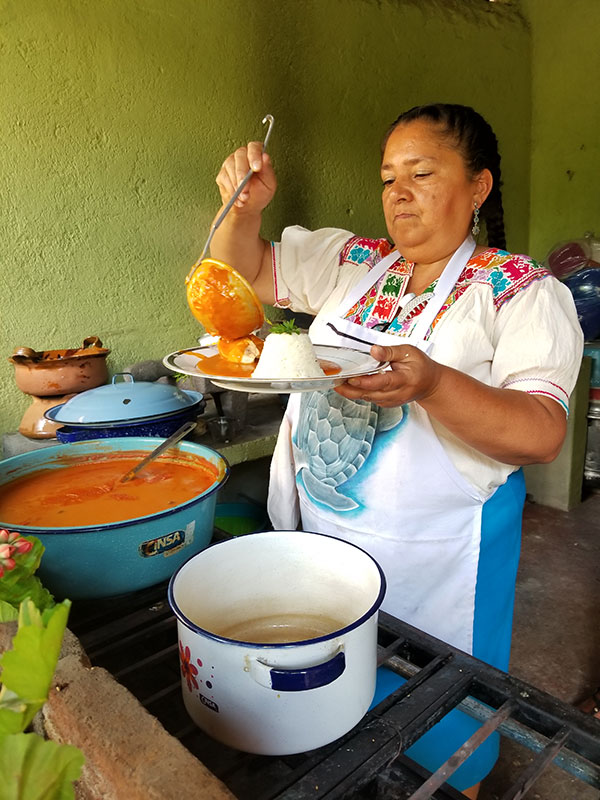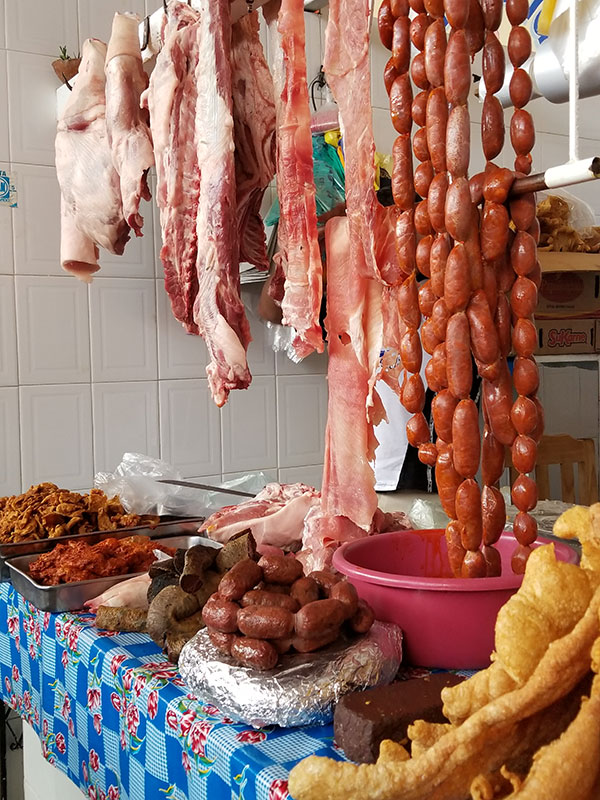
Food Safety Standards – Worth All the Effort?
27 February 2019A group of MSU Denver students and their adviser traveled on a study abroad trip to Mexico and discovered just how varied food safety standards are around the world.
By Lisa Parrish, GMC Editor and
Kori Dover, Metropolitan State University of Denver
 Most new culinary students disappointingly discover one of the first required classes does not involve cooking but rather food safety. They have come to their culinary education craving cooking knowledge, not proper food handling techniques, cleanliness and temperature standards.
Most new culinary students disappointingly discover one of the first required classes does not involve cooking but rather food safety. They have come to their culinary education craving cooking knowledge, not proper food handling techniques, cleanliness and temperature standards.
Instructors are also keenly aware that the students will learn much more about food safety as they progress through their culinary journey in addition to improving their cooking skills. But, the standard is usually safety first.
Why all the emphasis on food safety? Humans have been eating for centuries without local, state and federal food regulations. Officials have deemed food safety an important (and costly) practice that keeps our food supply safe, our restaurants relatively bacteria-free, and people from contracting food-borne illnesses. But, do these laws really work?
 If you are skeptical about the effectiveness of the regulations, you might try visiting an impoverished destination without such standards. The required food safety steps taken in the US may prove that they do indeed keep people healthy and out of the restroom with various gastrointestinal ailments.
If you are skeptical about the effectiveness of the regulations, you might try visiting an impoverished destination without such standards. The required food safety steps taken in the US may prove that they do indeed keep people healthy and out of the restroom with various gastrointestinal ailments.
That point was driven home for a group of Metropolitan State University of Denver culinary students that traveled with their instructor, Kori Dover, to Oaxaca, Mexico, for a Farm-to-Table Sustainability study abroad trip.
 Touring locations like marketplaces, eating from street food vendors and working in a local culinary school kitchen, they were exposed to various forms of limited food handling practices. And then there’s the water. According to Dover, “Frequently around town, you would see water supply trucks – which were pickup trucks with tanks – and they dropped water off at places. We had no idea where that water came from.” She also said that they frequently saw several large five-gallon water jugs in kitchens and were told the water was for cooking. However, Dover continued, “I never once saw the water jugs in use.”
Touring locations like marketplaces, eating from street food vendors and working in a local culinary school kitchen, they were exposed to various forms of limited food handling practices. And then there’s the water. According to Dover, “Frequently around town, you would see water supply trucks – which were pickup trucks with tanks – and they dropped water off at places. We had no idea where that water came from.” She also said that they frequently saw several large five-gallon water jugs in kitchens and were told the water was for cooking. However, Dover continued, “I never once saw the water jugs in use.”
So, what happened to the US culinarians familiar with Denver food safety practices but eating in places without such standards? “There was one girl that got sick and ended up seeing a doctor. She spent two whole days back at the hotel versus taking part in our activities,” Dover said. Additionally, Dover herself felt ill for two days toward the end of the trip.
The experience persuaded Dover to write an academic paper, “Mexico vs USA in Sanitation,” on the topic. Here is the paper’s abstract:
In the spring of 2018, several dietary food service providers were monitored throughout Oaxaca, Mexico. A qualitative, comparative research study was conducted that focused on examining dietary food service regulations outside the United States. The cumulative body of data collected is composed of observational conditions of food, water, and environmental factors which contribute to food safety.
Based on observations made in Oaxaca, Mexico, and in Denver, Colorado, the documentation and research that was conducted regarding dietary food safety measures resulted in a clear distinction between the two cities. By using the Denver Department of Public Health and Environment Food Service regulations as a guideline, we were able to critically observe and evaluate several different food establishments in Oaxaca, Mexico. These observations lead to the identification of several critical food violations and highlighted concerns related to inaccurate food safety behaviors as well as the need for regulation in foodservice operations in countries outside of the United States. Collectively, we were able to enhance our knowledge and awareness regarding food service regulation, thus giving an accurate representation of the diverse food safety standards seen throughout the world.
